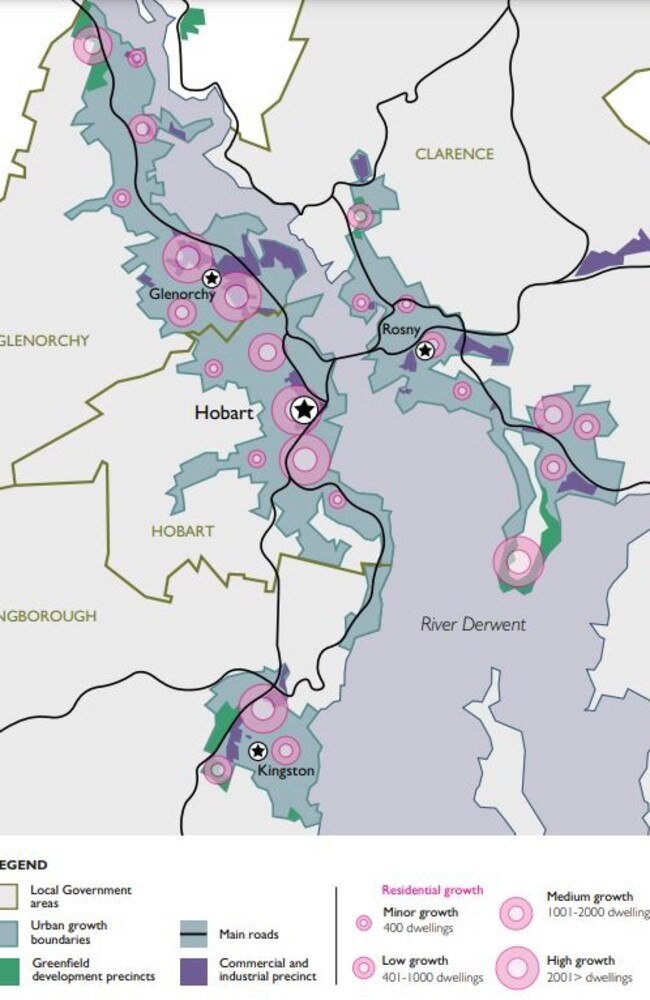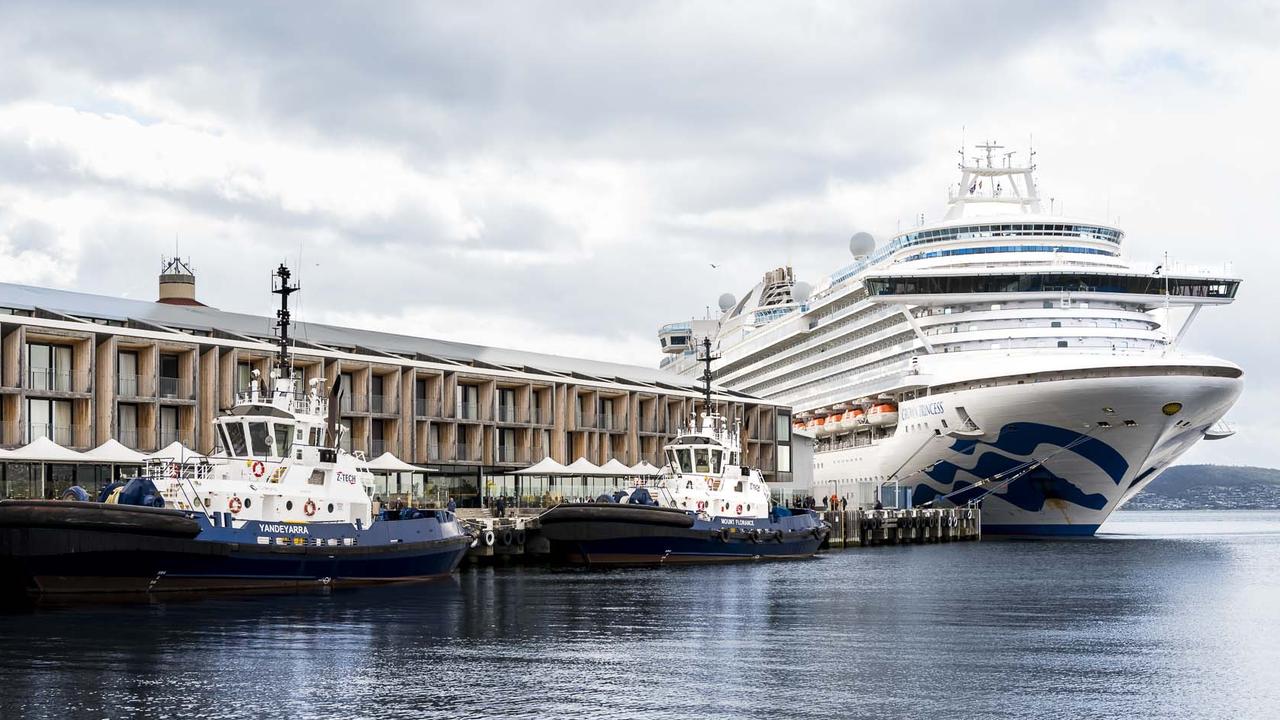Hobart 30-year plan: City needs 30,000 more homes for 60,000 people
The state government has unveiled a new 30-year plan to manage Greater Hobart’s growth, with medium-density dwellings forming a key plank of the strategy. SUBURBS SET FOR GROWTH >>

Tasmania
Don't miss out on the headlines from Tasmania. Followed categories will be added to My News.
The state government has revealed infilling existing central business districts within Greater Hobart via medium-density housing forms a key plank of its strategy to cope with a projected extra 60,000 residents calling the capital home in the next 30 years.
The draft 30-Year Greater Hobart Plan, unveiled on Monday by the Department of State Growth on behalf of and at the request of the Greater Hobart Committee – Hobart, Clarence, Kingborough and Glenorchy councils, as well as the state government – says the region will need an additional 30,000 homes to cater for the growth.
“This is the first time that transport, housing and precinct planning have been brought together in a spatially integrated manner in a whole of-city approach to help co-ordinate development over the long-term,” the plan’s summary says.
Under the plan, the additional housing required would be “primarily delivered through urban consolidation and infill development rather than greenfield development at the urban fringe”, with 21,000 dwellings created via infill and 9000 via greenfield development.
The infill development “is proposed to be primarily low-impact medium density residential dwellings, while allowing for higher density dwellings in appropriate locations”.

“This means encouraging more contemporary terrace and townhouse dwellings within, and surrounding, the main business districts and along corridors with high frequency public transport services,” the draft plan says.
Hobart itself would see “primarily infill” development within the CBD; Kingborough “primarily infill in and around the Kingston CBD, greenfield at Huntingfield, and a mix of infill and greenfield in already identified future growth areas at Margate and Snug”; Glenorchy “primarily infill, especially in the catchment areas along the transit corridor, and greenfield at Granton and Austins Ferry”; and Clarence “primarily infill, with greenfield in already identified future growth areas at Droughty Point and towards Pass Rd, Mornington”.
Regarding the infrastructure necessary to handle the growth, “there has been close liaison with key infrastructure providers including State Roads, TasWater, TasNetworks and NBNco,” the draft plan says.
“A focus on prioritising infill development will support the more efficient use of existing infrastructure and provides more opportunities for our transport system (road, parking, public and active transport) to improve public safety and reduce traffic congestion,” it says.
“Work to deliver on a Greater Hobart Transport Vision is underway through the Hobart City Deal, and the (state government) and Greater Hobart councils continue to collaborate closely with the (federal governments) to deliver on that vision.

“It is noted that significant policy decisions will be required as our cities grow.”
An implementation plan is currently being drafted, with an “action list... focusing on the next 3–5 years, with an eye on short, medium and long term priorities” also underway.
State Development Minister Guy Barnett said the draft plan “isn’t about changing what Hobart is or the character it is known for, but making it better, and making people’s lives easier and more connected, with more choice about how and where they live”.
Hobart Mayor Anna Reynolds urged locals to provide feedback on the draft plan online.
“There is so much to consider about the future and the ideas in this plan, and that’s why it’s so important to involve the community in the discussion,” she said.





